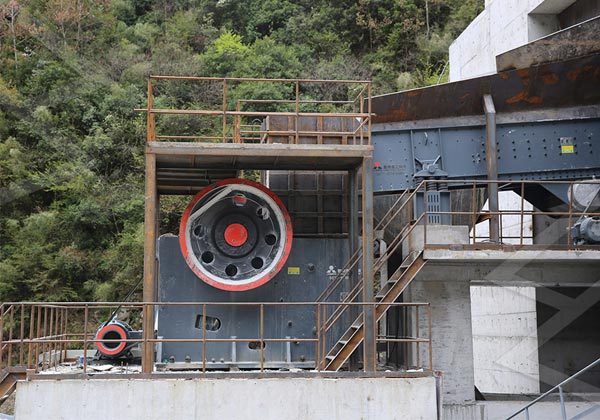A jaw crusher is a crucial piece of equipment used in the mining and aggregate industries for coarse crushing of rock materials. It operates on a simple yet effective principle: material is crushed between two jaws, one stationary and one movable. Here’s a more detailed look at how jaw crushers function and their significance in rock coarse crushing.
Principle of Operation
The jaw crusher’s primary mechanism involves a pair of jaws—a fixed jaw and a moving jaw—that form a V-shaped cavity. The fixed jaw is attached to the crusher frame, while the moving jaw is mounted on a swing arm. The swing arm is powered by an eccentric shaft, which causes the moving jaw to move back and forth. As the jaw moves, it creates a crushing force that reduces the size of the rock material.

Design and Construction
Jaw crushers are typically constructed with a heavy-duty frame to withstand the high impact forces generated during operation. The jaws themselves are made of hardened steel or manganese steel, ensuring they can handle the abrasive nature of rock material. The distance between the jaws can be adjusted, which allows for control over the size of the output material.
The size of a jaw crusher is often described by its feed opening, which is the maximum width of material that the crusher can handle. For instance, a “24×36” jaw crusher has a feed opening of 24 inches by 36 inches. This size determines the capacity of the crusher and is a crucial factor in determining its suitability for different applications.
Applications in Coarse Crushing
In coarse crushing, jaw crushers are used to break down large rock chunks into smaller, manageable pieces. This is the first stage of the crushing process, where the material is reduced to a size that can be further processed by secondary and tertiary crushers. Jaw crushers are known for their high throughput and are commonly used in mining, quarrying, and construction industries. They are particularly effective for processing hard, abrasive materials like granite, basalt, and ore.
Advantages
- Robust Design: Jaw crushers are built to handle tough conditions and can withstand high impact forces.
- Simple Operation: They are relatively easy to operate and maintain, with straightforward mechanical components.
- High Efficiency: They offer a high reduction ratio, efficiently breaking down large rocks into smaller sizes.
- Versatility: Jaw crushers can handle a variety of materials and are adaptable to different applications.
Limitations
- Limited Final Product Size: Jaw crushers are best suited for producing larger particles. For finer materials, additional processing might be required.
- High Wear and Tear: The jaws experience significant wear and tear, requiring regular maintenance and replacement.
- Energy Consumption: They can consume a substantial amount of energy, which might increase operational costs.
Maintenance and Safety
Regular maintenance is essential for ensuring the longevity and efficient operation of a jaw crusher. This includes checking and replacing worn parts, lubricating moving components, and ensuring proper alignment. Safety measures must also be in place to protect operators from potential hazards such as moving parts and flying debris.
In conclusion, jaw crushers play a vital role in the coarse crushing of rock materials. Their robust design, efficiency, and versatility make them a popular choice in various industries. Proper maintenance and safety protocols are crucial for optimizing performance and ensuring the safety of operators.

